#Late Period
Text

Seated Couple: Mentuemhat's Ancestors
Late Period, 26th Dynasty, ca. 664-525 BC.
Tomb of Mentuemhat (TT34), El-Assasif, Thebes.
Now in the Cleveland Museum of Art. 1949.493
A deceased vizier, whose name ended in Nufer, and his wife seated before a table of offerings. Presumably they were relatives of Mentuemhat. The work is in the style of early 18th Dynasty.
Mentuemhet is one of the most recognizable nonroyal names from ancient Egypt. He was a rich and powerful mayor and priest of Thebes and Governor of Upper Egypt who rebuilt the city after the Assyrians destroyed it.
Read more
19 notes
·
View notes
Text
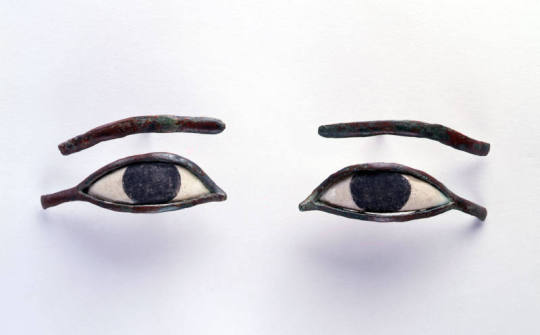
~ Pair of Eye Inlays.
Place of origin: Egypt
Period: Late Period, 25th-26th Dynasty
Date: 722-525 B.C.
Medium: Stone, alabaster, pigment.
#ancient#ancient art#history#museum#archeology#ancient egypt#ancient sculpture#ancient history#archaeology#egyptology#Egyptian#Egypt#pair of eye inlays#late period#25th dynasty#26th Dynasty#722 b.c.#525 b.c.
1K notes
·
View notes
Text
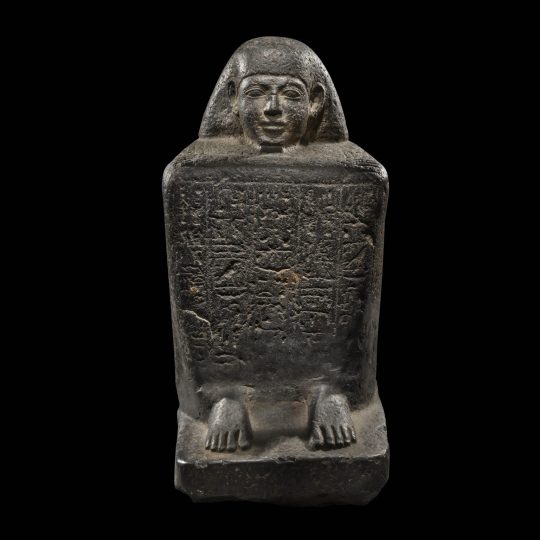

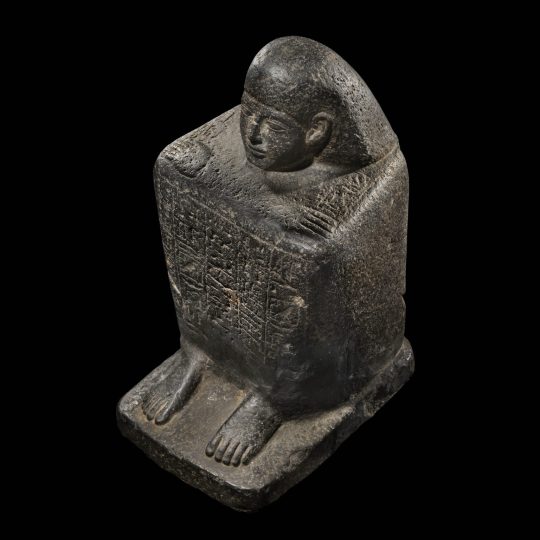
Egyptian Basalt Block Statue
Egyptian · Late Period, Dynasty 26, ca. 664-525 B.C.
#Egyptian Basalt Block Statue#Late Period#Dynasty 26#ca. 664-525 B.C.#statue#ancient artifacts#archeology#archeolgst#history#history news#ancient history#ancient culture#ancient civilizations#ancient egypt#egyptian history#egyptian art
198 notes
·
View notes
Photo

The falcon-headed crocodile at the Walters Art Museum in Baltimore. Late Period / early Ptolemaic.
431 notes
·
View notes
Text
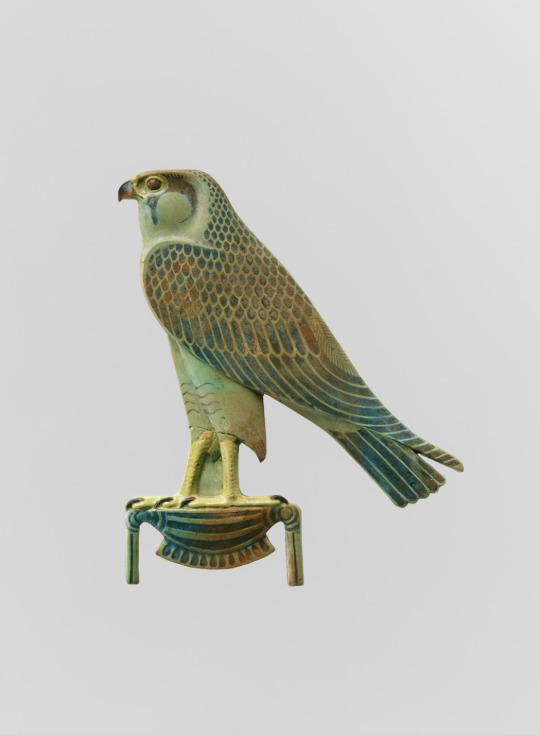
Inlay Depicting "Horus of Gold"
Egypt, Late Period–Ptolemaic Period, 4th century B.C
159 notes
·
View notes
Text

Ancient Egyptian faience inlay depicting a falcon with spread wings. Artist unknown; 4th cent. BCE (Late Period or early Ptolemaic). Now in the Metropolitan Museum of Art.
#art#art history#ancient art#Egypt#Ancient Egypt#Egyptian art#Ancient Egyptian art#Late Period#Ptolemaic#Ptolemaic Egypt#Ptolemaic art#animals in art#birds of prey#falcon#inlay#faience#Metropolitan Museum of Art
888 notes
·
View notes
Text

Head of a lion, Late Period–Ptolemaic Period, 400–300 B.C.
Gypsum plaster,
H. 42.5 x W. 40 cm (16 3/4 x 15 3/4 in.)
On view at The Met Fifth Avenue
#art#history#design#style#archeology#sculpture#antiquity#head#lion#egypt#late period#ptolemaic#gypsum#plaster#the met
26 notes
·
View notes
Text
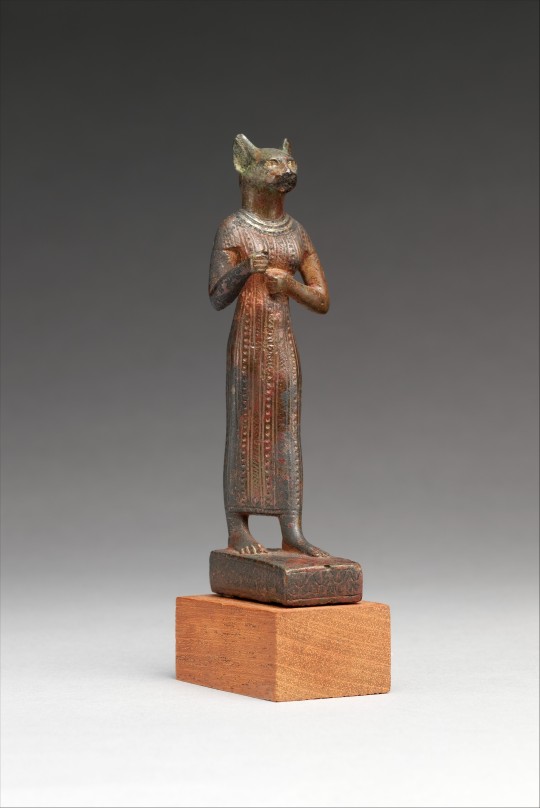
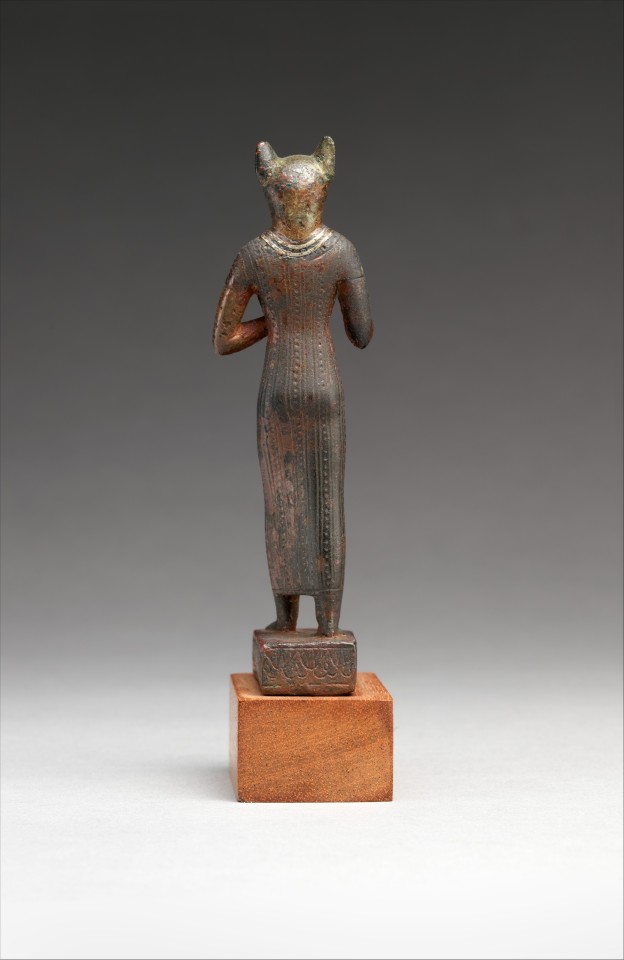
Bastet - Met Museum Collection
Inventory Number: 34.6.1
Late Period–Ptolemaic Period, 664–30 B.C.
Location Information: Location Unlisted
Description:
Bastet, here shown as a cat-headed goddess, was a powerful protective figure who also was known for her fertility. She could be represented with a lion head as well, but as a cat-headed goddess her peaceful traits were emphasized. Her personal adornments and garments are elaborate on statuettes, often more so than other goddesses, and she usually carries numerous attributes. This figure likely once held at least two separately-attached attributes, probably an aegis against her chest and a sistrum in her other hand. Her dress has an elaborate striped pattern with alternating dotted and lined bands. Bastet does not always wear a decorated dress, but it is much more common for her than for other goddesses. The patterning highlights its craftsmanship and quality; also, as some have suggested, the vertical banding may recall the striped fur of a cat.
Great attention to detail and color was lavished on this figure. Inlays are still visible in Bastet’s eyes, and alternating rows of precious metal and black bronze inlay form her broad collar. Also special to this piece is the base; rather than an inscription or blank register, as on most statuettes, this base bears a pattern of repeated lotus blossoms and buds.
#bastet#late period#ptolemaic#met museum#34.6.1#location unlisted#deities#deitiesw#womens clothing#LPWC#PWC
18 notes
·
View notes
Text
Interesting tomb with a vaulted ceiling. That alone tags it as very late, but then you have the artistic style, and it's confirmed.
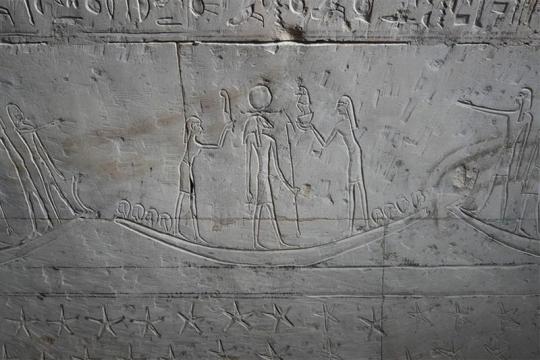
21 notes
·
View notes
Text
If I'm 1 more day late this will be my longest cycle in 3 years
#late period#honestly im hoping i just skip this one so i dont have to deal with cramps and#shark week#jellyfish speaks
7 notes
·
View notes
Text

cupreous otter statue, Egypt, c. 664-30 (Late Period- Late Ptolemaic)
currently in the collection of the Metropolitan Museum of Art, accession no. 23.6.2
#isaac.txt#archaeology#art#egypt#egyptology#egyptian archaeology#ptolemaic egypt#late period#hellenistic
142 notes
·
View notes
Text

Statuette of pantheistic god Bes
Bronze inlaid with gold.
Late Period or the Ptolemaic Period, 664-30 BC.
Now in the the Fondation Gandur pour l'Art, Geneva.
"Despite his appearance, which changed in many details over time, Bes was deemed beneficent to humans and he was accepted by all classes of Egyptians as a powerful apotropaic deity. He was especially associated with the protection of children and of pregnant women and those giving birth..." Bes was believed to provide protection from snakes among other noxious forces; this statuette shows him in motion stepping on serpents. But Bes was also associated with many of the good things in life: sex, music, and merriment.
"... [In] his later composite form Bes is depicted as the head and sometimes body of a four-armed, winged and many-headed god with the tail of a falcon and the attributes of many of the deities with whom he was combined..."
― Complete Gods and Goddesses of Ancient Egypt, by Richard H. Wilkinson
516 notes
·
View notes
Text


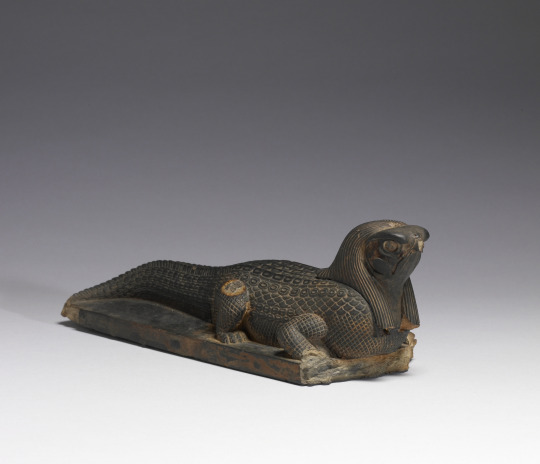
~ Statue of a Crocodile with the Head of a Falcon.
Culture: Egyptian
Date: ca. 380-250 B.C.
Period: Late Period-early Ptolemaic Period; 30th Dynasty
Medium: Steatite
#ancient#ancient art#history#museum#archeology#ancient egypt#ancient sculpture#ancient history#archaeology#Egyptian#egyptology#Egypt#crocodile#falcon#ptolemaic#late period#30th dynasty#steatite#ca. 390 b.c.#ca. 250 b.c.
3K notes
·
View notes
Text
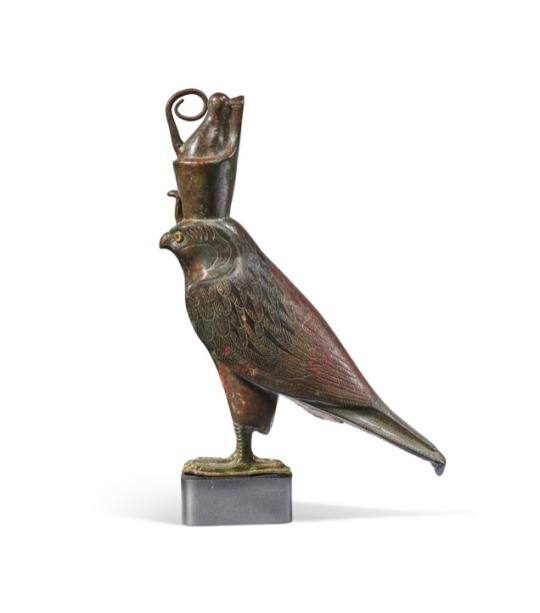
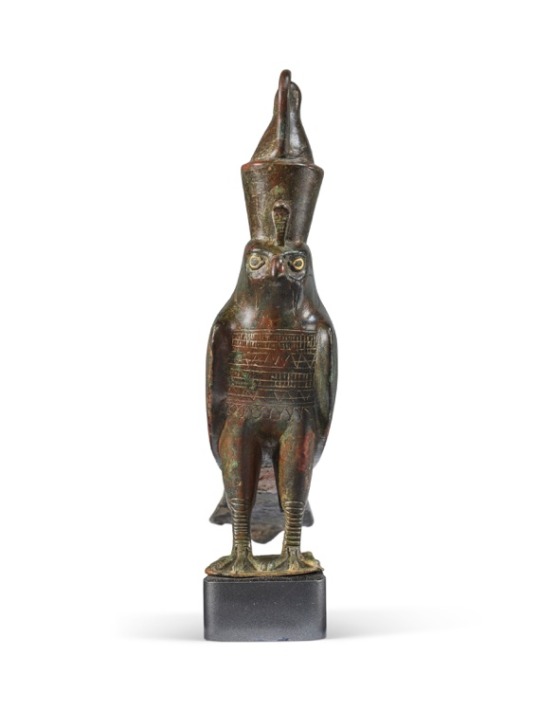
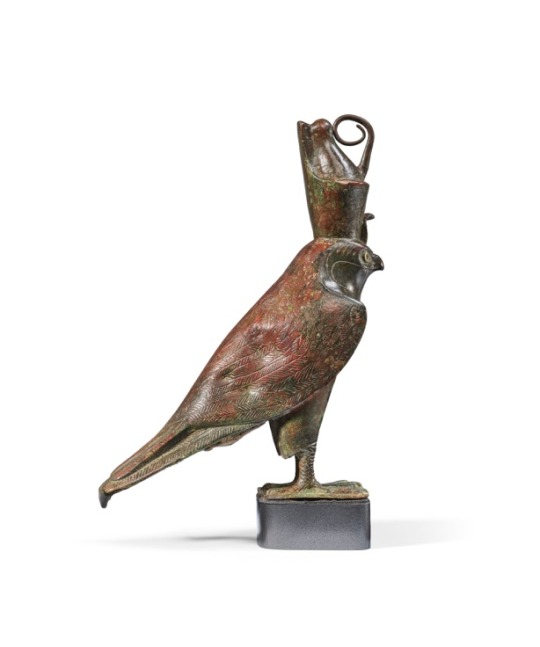
AN EGYPTIAN BRONZE HORUS FALCON
LATE PERIOD, 26TH DYNASTY, 664-525 B.C.
#AN EGYPTIAN BRONZE HORUS FALCON#LATE PERIOD#26TH DYNASTY#664-525 B.C.#bronze#bronze statue#bronze sculpture#ancient artifacts#archeology#archeolgst#history#history news#ancient history#ancient culture#ancient civilizations#ancient egypt#egyptian history#egyptian art#ancient art
141 notes
·
View notes
Photo

This pantheistic papyrus shows a god with multiple heads, four wings, a falcon’s tail, snakes on his feet, holding weapons, surrounded by flames -- in other words, completely and utterly powerful enough to help you. He tramples unfriendly animals like a crocodile, snakes, and a wild boar.
Where: British Museum
When: Dynasty 25 - Late Period
#Ancient Egypt#papyrus#pantheistic#British Museum#Third Intermediate Period#25th Dynasty#Late Period
58 notes
·
View notes
Text

Statuette of Sobek
Egyptian, Late Period, Dynasty 26–30, 664–332 BCE
Here the crocodile god Sobek, associated with water and the Nile River, wears an elaborate crown adorned with horns, feathers, and a uraeus (sacred serpent). Egyptian gods were commonly depicted with human bodies and animal heads. The animal referred to the god’s personality or characteristics, not his or her appearance. For example, the crocodile head of Sobek alludes to his fierceness. Statuettes like these were offered to the gods to ask for their help or in thanks for their assistance.
148 notes
·
View notes